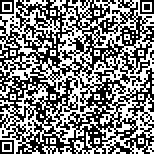| 引用本文: | 刘宇佳,胡晓平,钟里科,李晶晶,李莉,黄萍,张轶雯.胃癌新辅助化疗耐药机制及治疗策略研究[J].中国现代应用药学,2019,36(15):1914-1918. |
| LIU Yujia,HU Xiaoping,ZHONG Like,LI Jingjing,LI Li,HUANG Ping,ZHANG Yiwen.Study on Drug Resistance Mechanism and Treatment Strategy of Neoadjuvant Chemotherapy for Gastric Cancer[J].Chin J Mod Appl Pharm(中国现代应用药学),2019,36(15):1914-1918. |
|
| |
|
|
| 本文已被:浏览 2458次 下载 1476次 |

码上扫一扫! |
|
|
| 胃癌新辅助化疗耐药机制及治疗策略研究 |
|
刘宇佳1,2, 胡晓平1, 钟里科1, 李晶晶3, 李莉4, 黄萍1,2, 张轶雯1,2
|
|
1.浙江省肿瘤医院, 药剂科, 杭州 310022;2.浙江省头颈肿瘤转化医学研究重点实验室, 杭州 310022;3.浙江省肿瘤医院, 腹部内科, 杭州 310022;4.杭州市淳安县第一人民医院, 杭州 311700
|
|
| 摘要: |
| 目的 利用生物信息学筛选影响胃癌化疗耐药的特征基因,深入探讨化疗耐药的分子机制,为胃癌的化疗提供新策略。方法 在GEO数据库筛选胃癌DCS方案(多西他赛+顺铂+替吉奥)耐药表达谱芯片,利用GEO2R工具筛选胃癌耐药组织特征基因;构建差异基因的蛋白质-蛋白质相互作用(protein-protein interaction,PPI)网络;并分析PPI网络的关键节点和稳定模块,进而对差异基因和关键节点及模块基因进行功能富集及注释;再对差异基因进行化合物靶点模拟,筛选出潜在药物。结果 筛得胃癌化疗耐药差异基因共609个,构建PPI网络的关键节点为ACLY和AKT1。差异基因GO功能富集与KEGG通路富集结果显示,主要集中在免疫及肿瘤生长相关通路。C-MAP分析结果提示7个候选化合物吻合度评分>0.9。结论 本研究利用生物信息学筛选了影响胃癌化疗耐药的特征基因,深入探讨化疗耐药的分子机制,为胃癌的化疗提供了新策略。 |
| 关键词: 胃癌 化疗耐药 生物信息学 基因功能富集及注释 PPI网络 |
| DOI:10.13748/j.cnki.issn1007-7693.2019.15.012 |
| 分类号:R969.4 |
| 基金项目:国家自然科学基金项目(81503165);浙江省医药卫生科技计划项目(2017RC001, 2018KY148) |
|
| Study on Drug Resistance Mechanism and Treatment Strategy of Neoadjuvant Chemotherapy for Gastric Cancer |
|
LIU Yujia1,2, HU Xiaoping1, ZHONG Like1, LI Jingjing3, LI Li4, HUANG Ping1,2, ZHANG Yiwen1,2
|
|
1.Zhejiang Cancer Hospital, Department of Pharmacy, Hangzhou 310022, China;2.Key Laboratory of Head & Neck Cancer Translational Research of Zhejiang Province, Hangzhou 310022, China;3.Zhejiang Cancer Hospital, Department of Internal Abdominal, Hangzhou 310022, China;4.The First People's Hospital of Chunan, Hangzhou 311700, China
|
| Abstract: |
| OBJECTIVE To analyze the microarray data of the gastric cancer patients with chemotherapy resistance to look for the differences of gene modules and key pathways. METHODS Gene expression profiles of the gastric cancer with the information of chemoresistance in GEO database were selected. The GEO2R tools were used to identify differential expression genes (DEGs) and String database was employed to visualization analysis for protein-protein interaction (PPI) network. Then, the PPI network was imported into the Cytoscape software to find key nodes and stabilization modules by Centiscape, MCODE. After that, DAVID database was used to enrich and annotate the pathway and key modules. Finally, the C-MAP platform was used to simulate the compounds that matched the variation trend of differential genes. RESULTS This study identified 609 characteristic genes of chemoresistance gastric cancer. ACLY, AKT1 were key nodal proteins for drug resistance in gastric cancer, related with immune and tumor growth signal pathway. The results of C-MAP analysis suggested that the score of 7 candidate compounds was more than 0.9. CONCLUSION This study employed bioinformatics method from various perspectives to define the gene expression characteristics of gastric cancer with chemoresistance. These results may facilitate the discovery of biomarkers for predicting chemotherapy responses in gastric cancer and contribute in developing personalized medicines. |
| Key words: gastric cancer chemotherapy resistance bioinformatics gene enrichment and annotation PPI network |
|
|
|
|
